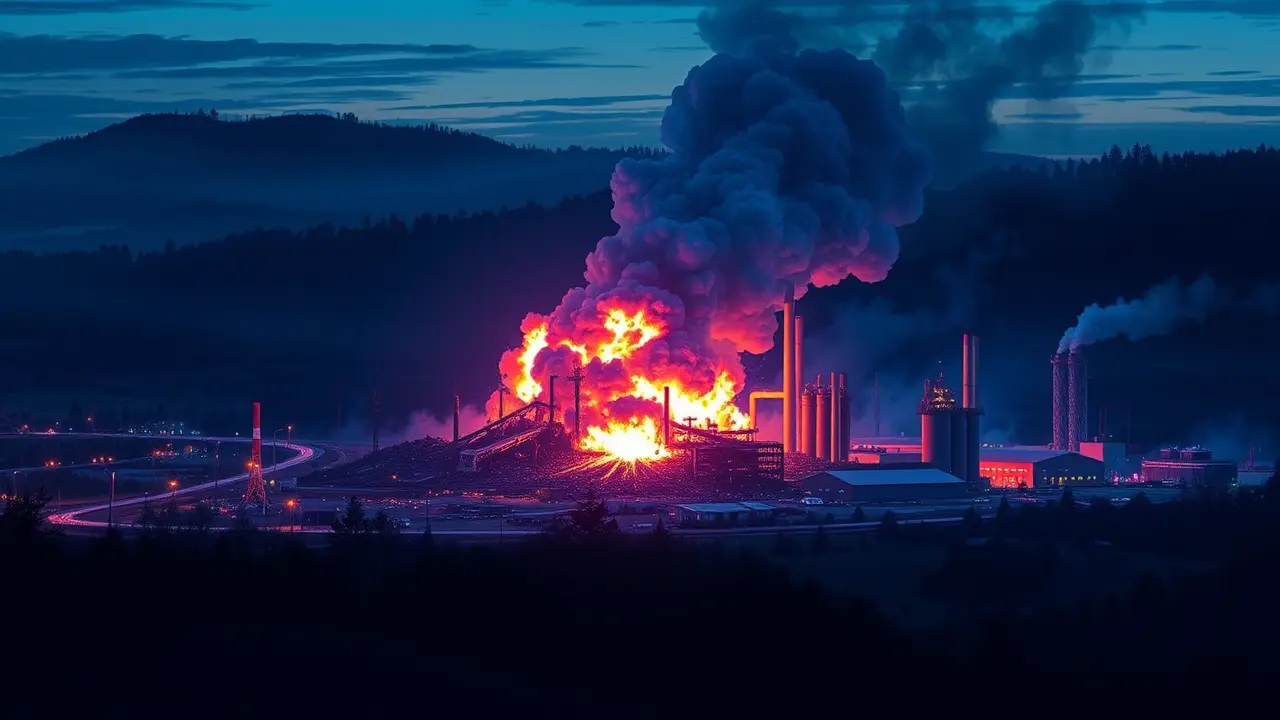Deadly Explosion at Tennessee Munitions Plant Leaves Casualties.
The grim reality of a catastrophic industrial failure came into sharp, unsettling focus this morning as aerial footage confirmed the near-total annihilation of a key structure at the Tennessee munitions plant operated by Accurate Energetic Systems. The hilltop building, a nexus of volatile materials and precise engineering, was not merely damaged but utterly obliterated, reduced to a scar of smoldering wreckage against the American landscape—a silent, smoking testament to the ferocity of the blast that has, according to preliminary but credible reports from emergency channels, resulted in a significant number of casualties, the full extent of which rescue crews are still desperately working to ascertain.This isn't an abstract event; it's a visceral, breaking crisis unfolding in real-time, echoing the urgent bulletins from past industrial catastrophes like the West Fertilizer Company explosion, where the initial, chaotic hours were similarly defined by a desperate search for survivors amidst the rubble and a frantic effort to contain the secondary threats of fire and further detonation. The very nature of Accurate Energetic Systems' work—handling and producing high-energy explosives for both commercial and defense applications—immediately raises the stakes, transforming this from a simple industrial accident into a complex emergency with layers of immediate danger, from potential airborne contamination to the structural instability of adjacent facilities housing similarly sensitive materials.First responders, the true heroes in this unfolding drama, are operating in a high-risk environment, their every move calculated against the clock and the ever-present threat of a secondary event, a scenario that haunts every fire chief and incident commander at the scene. The broader context here is a national conversation about the safety protocols governing the munitions industry, a sector where the margin for error is effectively zero; preliminary questions will inevitably zero in on maintenance records, workforce training, the age and integrity of the infrastructure, and the robustness of the fail-safes that were supposed to prevent exactly this kind of cataclysmic failure.We must look to the investigative playbook that followed disasters such as the PEPCON conflagration in 1988, where a painstaking, forensic dissection of events revealed a chain of procedural failures and overlooked risks, a template that federal agencies from the Occupational Safety and Health Administration (OSHA) to the Bureau of Alcohol, Tobacco, Firearms and Explosives (ATF) will now deploy with grim determination. The consequences will ripple far beyond the immediate perimeter of the blast zone, impacting the local community's sense of security, the company's very existence, and the regulatory landscape that oversees an industry built on contained chaos.Supply chain analysts are already noting potential disruptions for defense contractors and mining operations that rely on the specialized output of this facility, while local officials are bracing for the long-term economic and psychological fallout that inevitably follows such a traumatic event. This is a story still being written in smoke and sirens, a stark reminder of the immense power we harness and the profound responsibility that comes with it—a responsibility that, today, appears to have been fatally breached.
It’s quiet here...Start the conversation by leaving the first comment.
© 2025 Outpoll Service LTD. All rights reserved.
